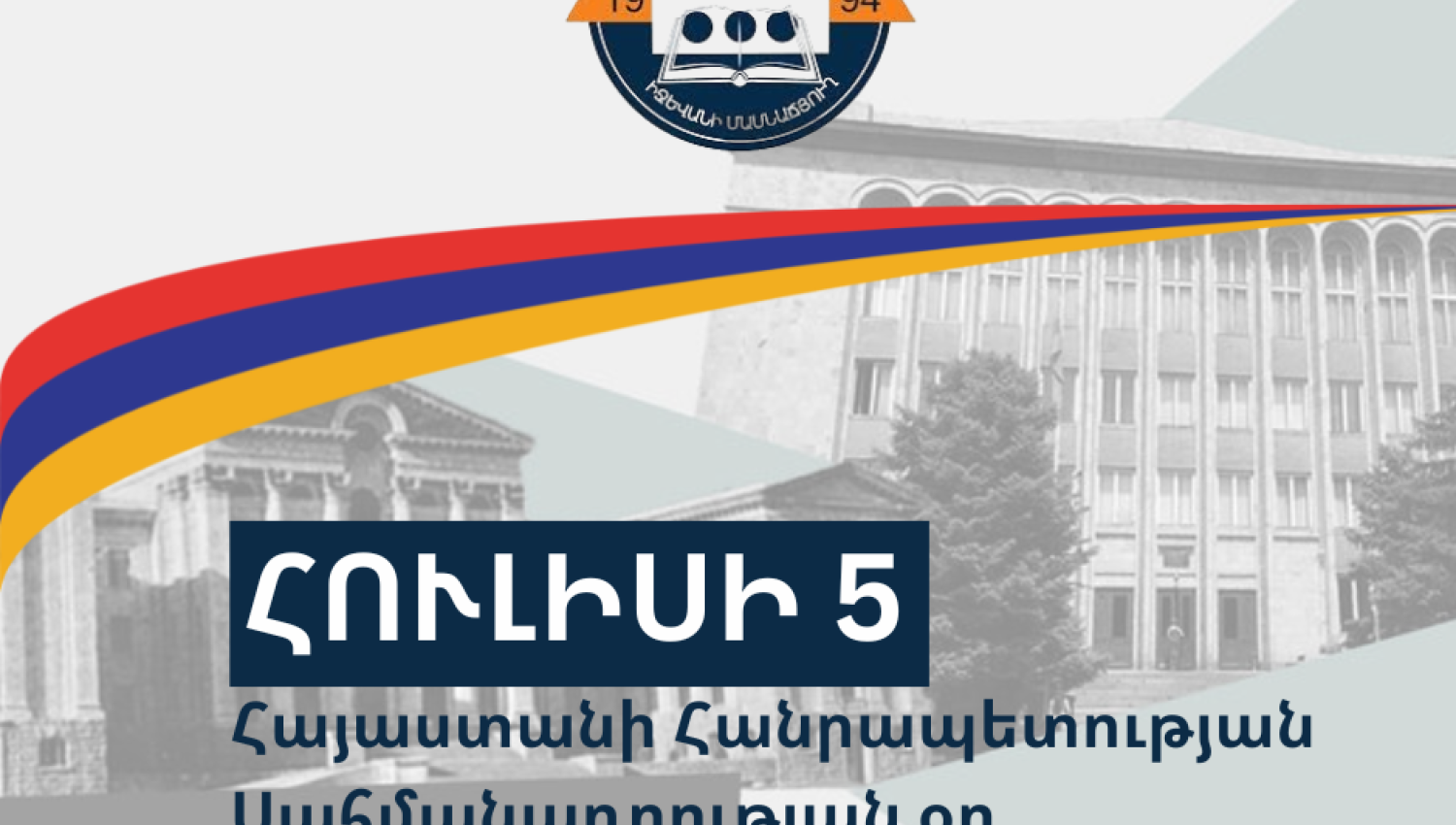- Main
- News and events
- Happy Constitution and State Emblem Day of the Republic of Armenia
Ijevan Branch of YSU

Today, July 5, 2025 marks the 30th anniversary of the adoption of the Constitution of the Republic of Armenia. With the restoration of the independence of the Republic of Armenia in 1991, the need to adopt a new national constitution arose. The new Constitution was adopted on July 5, 1995 by a national referendum.
The Constitution enshrined the nature of the Republic of Armenia as a sovereign, democratic, legal and social state, proclaimed the fundamental rights and freedoms of man and citizen, and defined the form of government of the republic based on the principle of separation of legislative, executive and judicial powers. In 2001, the accession of the Republic of Armenia to the Council of Europe necessitated certain amendments to the Constitution. However, in 2003, the draft constitutional amendments submitted to a referendum were not adopted.
Amendments were made to the 1995 Constitution in 2005, 2015 and 2020.
After the adoption of the Constitution, July 5 became a state holiday - Constitution Day, and at the session of the Government of the Republic of Armenia on July 4, 2013, a decision was adopted to amend the Law "On Holidays and Days of Remembrance of the Republic of Armenia", according to which July 5 was also established as the day of state symbols - the flag, coat of arms and anthem. The history of the flag of Armenia begins in 1918. Since May 28, when the first Republic of Armenia was formed.
The National Council of Armenia began to discuss the issue of the state flag. At that time, after the speech of the future academician of the Armenian SSR Stepan Malkhasyan, in June 1919, a decision was made to adopt the red-blue-orange flag. Red symbolizes the constant struggle of the Armenian people for survival, Christian faith, independence and freedom of Armenia, blue - the will to live under a peaceful sky, orange - the creative talent and hard work of the Armenian people. Another description of the meaning of the colors was given at the beginning of the 20th century: red is the blood shed by millions of Armenians killed throughout history, including during the Armenian Genocide, blue is the clear, peaceful sky to which Armenia aspires, apricot is the color of the fertile Armenian soil, a symbol of the hard work of the Armenian people (also apricot is the symbolic fruit of Armenia).
Years later, on August 24, 1990 the law "On the State Flag of the Republic of Armenia" approved the state flag of the Republic of Armenia. It was a restored flag based on the 1919 tricolor - a banner consisting of three equal horizontal stripes: red, blue and apricot. Like the flag, the coat of arms of the First Republic also became the coat of arms of the Republic of Armenia by the law "On the State Coat of Arms of the Republic of Armenia". The authors are architect Alexander Tamanyan and painter Hakob Kojoyan. In the center of the coat of arms, on the shield, Mount Ararat with Noah's Ark and the coats of arms of the 4 kingdoms of historical Armenia - the Bagratunis, Arshakunis, Artashesians, Rubinians are depicted. The shield is held by an eagle and a lion, and below the shield are depicted a sword, a branch, a sheaf of ears of corn, a chain and a ribbon.
The national anthem is a solemn musical composition. By the decision of the Supreme Council of the Republic of Armenia of June 1, 1991, the anthem of the first republic of Armenia, “Our Homeland,” was adopted as the national anthem. By the RA Law “On the State Anthem of the Republic of Armenia,” in 2006, it became the national anthem of the Republic of Armenia. The author of the words is Mikael Nalbandyan, and the music is Barsegh Kanachyan.
Happy Constitution and State Symbols Day of the Republic of Armenia, long live the Republic of Armenia, long live the Armenian people….
Spread the article